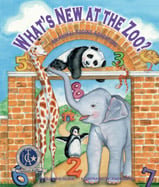Alignment to Standards for VA

| Grade | Number | Standard |
|---|---|---|
| 1 | MA-1.3 | count forward by ones, fives, and tens to 100, by twos to 20, and backward by ones from 20. |
| 1 | MA-1.8 | recall basic addition facts ã i.e., sums to 10 or less ã and the corresponding subtraction facts. |
| 1 | MA-1.9 | create and solve story and picture problems involving one-step solutions, using basic addition and subtraction facts. |
| 1 | SC-1.1c | objects or events are classified and arranged according to attributes or properties; |
| 1 | SC-1.5b | animal characteristics:body coverings, body shape, appendages, and methods of movement) |
| 1 | SC-1.5c | animal characteristics. Key concepts include other characteristics (wild/tame, water homes/land homes). |
| 2 | MA-2.1 | The student, given a simple addition or subtraction fact, will recognize and describe the related facts which represent and describe the inverse relationship between addition and subtraction |
| 2 | MA-2.26 | solve problems by completing a numerical sentence involving the basic facts for addition and subtraction. Examples include: 3 + __ = 7, or 9 _ __ = 2. Students willcreate story problems, using the numerical sentences. |
| 2 | MA-2.6 | recall basic addition facts ã _i.e., sums to 18 or less ã and the corresponding subtraction facts. |
| 2 | MA-2.8b) | find the difference, using various methods of calculation (mental computation, concrete materials, and paper and pencil). |
| 2 | SC-2.1c | conduct investigations in which two or more attributes are used to classify items; |
| 2 | SC-2.4a | plant and animal life cycles. Key concepts include some animals (frogs and butterflies) undergo distinct stages during their lives, while others generally resemble their parents; and |
| 3 | MA-3.4 | recognize and use the inverse relationships between addition/subtraction and multiplication/division to complete basic fact sentences. Students will use these relationships to solve problems such as 5 + 3 = 8 and 8 _ 3 =. |
| 3 | SC-3.4a | animal adaptations: methods of gathering and storing food, finding shelter, defending themselves, and rearing young; |
| 3 | SC-3.4b | animal adaptations: hibernation, migration, camouflage, mimicry, instinct, and learned behavior. |
| 3 | SC-3.5b | food chains. Key concepts include herbivore, carnivore, omnivore |
| 3 | SC-3.5c | food chains. Key concepts include predator and prey. |
| 3 | SC-3.8b | Key concepts include animal and plant life cycles. |
| 4 | SC-4.5e | Key concepts include life cycles |
| K | MA-K.2a) | tell how many are in the set by counting the number of items orally; |
| K | MA-K.2b) | select the corresponding numeral from a given set; and |
| K | MA-K.6 | add and subtract whole numbers, using up to 10 concrete items. |
| K | MA-K1 | The student, given two sets containing 10 or fewer concrete items, will identify and describe one set as having more, fewer, or the same number of members as the other set, using the concept of one-to-one correspondence. |
| K | SC-K.4d | physical properties Key concepts include relative size and weight (big/little, large/small, heavy/light, wide/thin, long/short); and |
| K | SC-K.6b | basic needs plants and animals. Key concepts include plants and animals live and die (go through a life cycle); and |
| K | SC-K.6c | Key concepts include offspring of plants and animals are similar but not identical to their parents and to one another. |
| K | SC-K.8c | simple patterns in daily life. Key concepts include animal and plant growth |